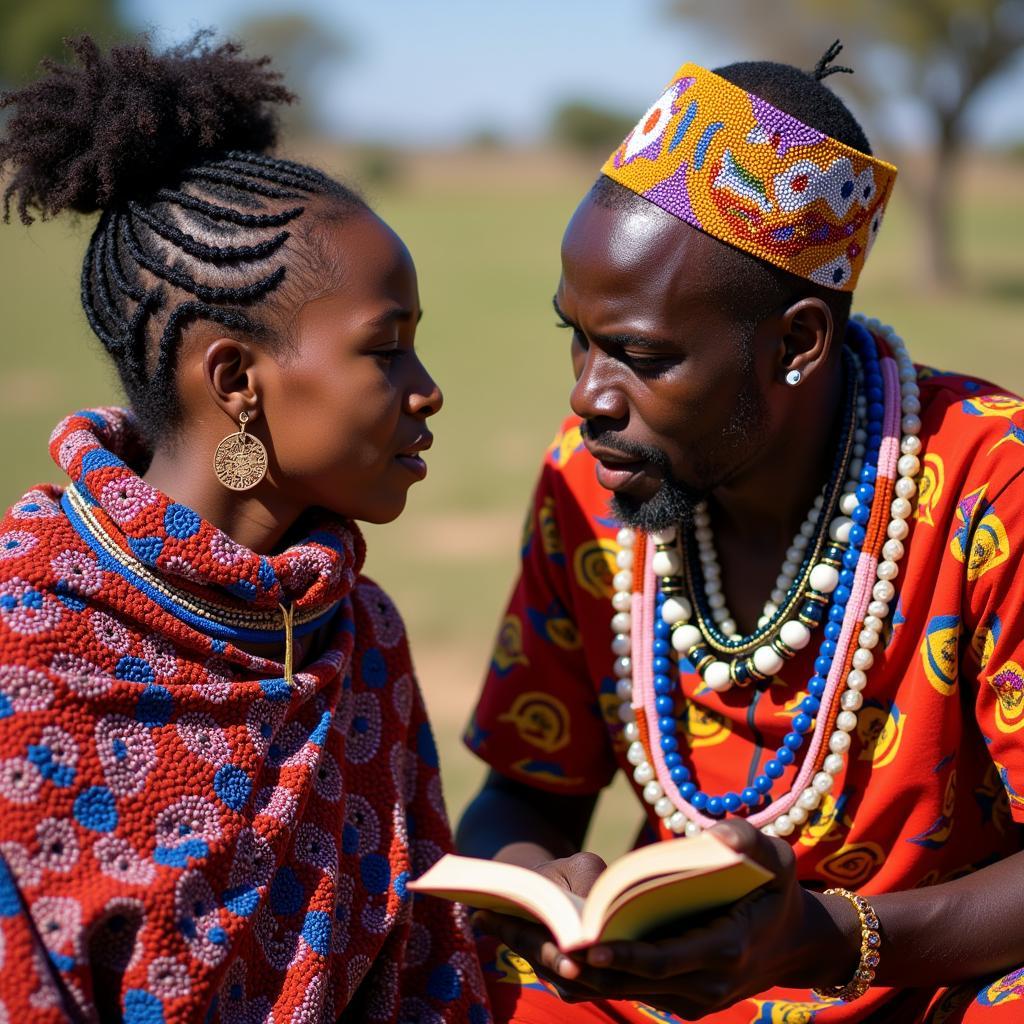Unveiling the Secrets of the African Bongo Deer
The African Bongo Deer, a captivating creature of the dense African forests, remains an enigma to many. With its striking coat, majestic horns, and elusive nature, this antelope species has captured the imagination of wildlife enthusiasts worldwide. Let’s delve into the fascinating world of the bongo and uncover its secrets.
A Glimpse into the Life of an African Bongo Deer
Bongos are the largest forest antelope species, inhabiting the lowland and montane forests of Central Africa, from western Kenya to Sierra Leone. They are characterized by their reddish-brown coat, adorned with 10-15 thin white stripes, a white chevron between the eyes, and large, spiraled horns. These magnificent creatures are predominantly nocturnal, preferring the cover of darkness for foraging and other activities. Their diet mainly consists of leaves, fruits, and other vegetation found within their forest habitat.
Habitat and Distribution of the African Bongo Deer
Bongos thrive in dense rainforests, often near water sources. Their distribution is fragmented, with populations found in countries like Cameroon, Central African Republic, Democratic Republic of Congo, Gabon, Kenya, and South Sudan. Sadly, their numbers are dwindling due to habitat loss, hunting, and disease. Conservation efforts are crucial to ensure the survival of this magnificent species.
Bongos are notoriously shy and elusive, making them difficult to study in their natural habitat. They are social animals, living in small herds of up to 50 individuals, usually comprised of females and their young. Adult males tend to be solitary, only joining herds during mating season.
The Unique Physical Characteristics of the Bongo
The bongo’s striking appearance makes it easily distinguishable from other antelope species. Their spiraled horns, which can reach up to 40 inches in length, are used for defense against predators and during disputes between males. Their reddish-brown coat provides excellent camouflage in the dappled light of the forest floor. Bongos are also known for their excellent hearing and sense of smell, which help them navigate the dense vegetation and detect potential threats.
What is the average lifespan of a bongo? A bongo can live up to 20 years in captivity, though their lifespan in the wild is typically shorter.
Threats to the African Bongo
Unfortunately, the future of the African bongo is uncertain. Habitat loss due to deforestation and human encroachment continues to be a significant threat. Hunting for their meat and horns also poses a serious danger. Furthermore, diseases, such as rinderpest, can decimate bongo populations.
Conservation Efforts for the African Bongo
Various conservation organizations are working tirelessly to protect the African bongo. These efforts include habitat preservation, anti-poaching patrols, and breeding programs in zoos and wildlife sanctuaries. Raising awareness about the plight of the bongo is crucial to garnering public support and securing the future of this magnificent creature.
“The bongo is a truly remarkable animal, and we must do everything we can to ensure its survival,” says Dr. Amani Mosi, a leading wildlife conservationist in Tanzania. “Protecting its habitat and combating poaching are critical steps in this endeavor.”
What Makes the African Bongo Deer Special?
The African bongo deer holds a unique place in the African ecosystem. Its role as a seed disperser and browser helps maintain the health and diversity of the forest. Its striking appearance and elusive nature make it a sought-after sight for wildlife enthusiasts. The bongo’s cultural significance in certain African communities further underscores the importance of its conservation.
“The bongo is more than just a beautiful animal; it’s an integral part of the African rainforest,” states Dr. Zara Okafor, a researcher specializing in African wildlife ecology. “Its presence indicates a healthy ecosystem, and its loss would have far-reaching consequences.”
Conclusion: The Future of the African Bongo Deer
The African bongo deer faces a precarious future. Continued conservation efforts are vital to ensuring its survival. By supporting these initiatives and raising awareness, we can help safeguard the future of this remarkable creature and the precious ecosystems it calls home.
FAQ
- What is the scientific name of the African bongo? Tragelaphus eurycerus
- Where do bongos live? Bongos inhabit lowland and montane forests of Central Africa.
- What do bongos eat? Bongos are herbivores, feeding on leaves, fruits, and other vegetation.
- Are bongos endangered? Yes, bongos are classified as a Near Threatened species.
- How big are bongos? Bongos are the largest forest antelope species, standing up to 4 feet tall at the shoulder.
- What are the main threats to bongos? Habitat loss, hunting, and disease are the primary threats.
- How can I help protect bongos? You can support conservation organizations working to protect bongos and their habitat. You can also help by spreading awareness about their plight.
Possible related searches:
- African antelope species list
- Bongo conservation efforts
- African rainforest ecosystem
- Wildlife conservation in Africa
Call us at +255768904061, email kaka.mag@gmail.com or visit us at Mbarali DC Mawindi, Kangaga, Tanzania. We have a 24/7 customer service team.
